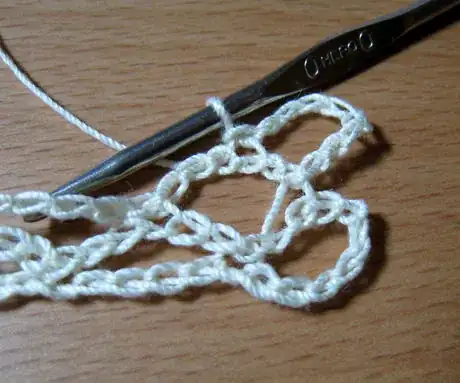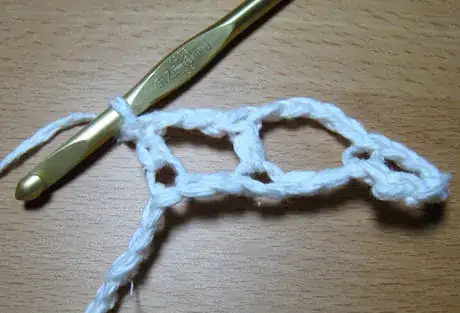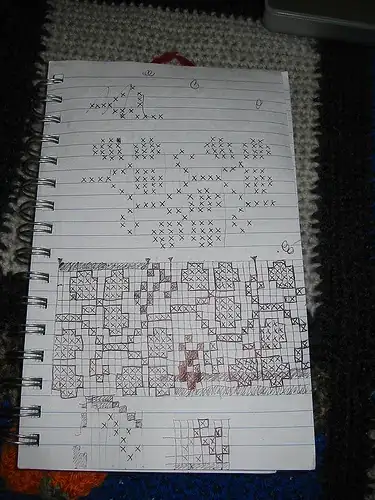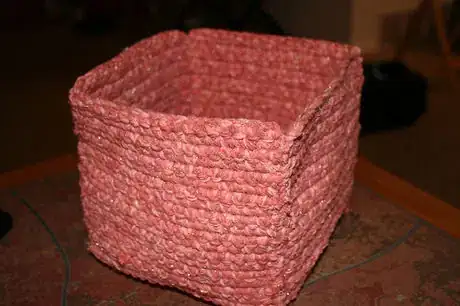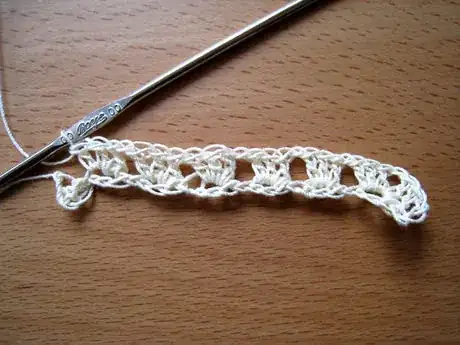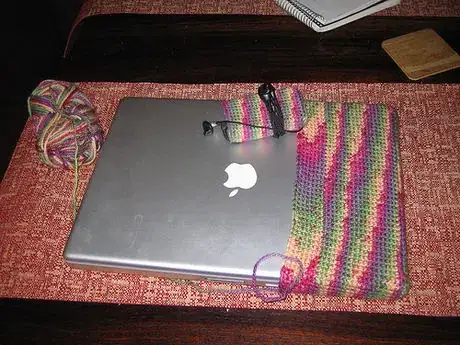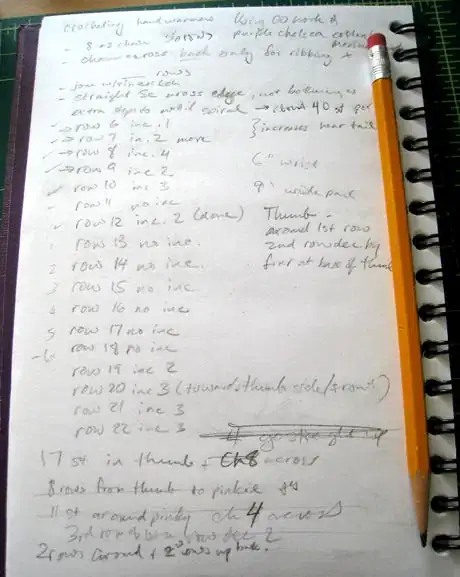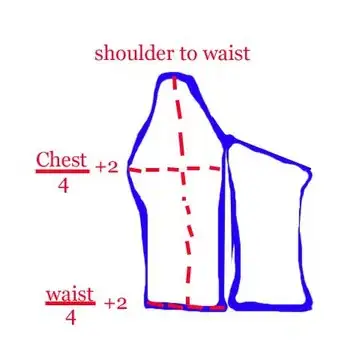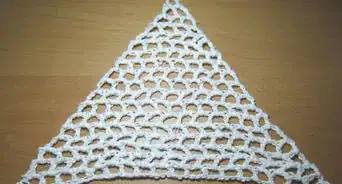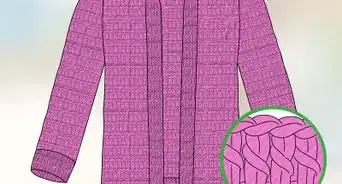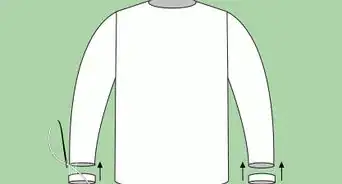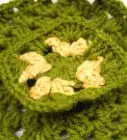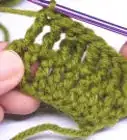X
wikiHow is a “wiki,” similar to Wikipedia, which means that many of our articles are co-written by multiple authors. To create this article, 19 people, some anonymous, worked to edit and improve it over time.
This article has been viewed 565,080 times.
Learn more...
So you've been crocheting for a while now, and you'd like to get yourself off the printed page and into making up your own designs. You want to create rather than just read.
It's easy enough to make up your own designs. The crochet you invent can be free-form, or very mathematical, or somewhere in between, depending on your style and your goal.
Steps
-
1Master the basics of crochet. You don't need to know every crochet stitch, but you should know how to tie a slip knot and make a starting chain. You should also know how to single crochet, double crochet, slip stitch, and how to increase and decrease with single and double crochet. It's true there are lots of other stitches and combinations, but there is much you can do with just these basics. If you do learn other stitches you like, you can incorporate them in much the same ways as the standard stitches.
- Notice what each stitch does, and make a practice piece or two if you need to.
- Chains start a piece of fabric or a new direction in an existing fabric. Chains can also be used as an element of their own.
- Slip stitches advance the hook without making the fabric very much taller, so they are used for things like finishing rounds. You can also do a whole row of them around an edge if you want for a finished look.
- Treble crochet stitches are taller than double, and taller than single, but a fabric made of single crochet is tighter. A single crochet is about as tall as it is wide. A double crochet is tall enough to reach over a row of single crochet to the previous row, or leave a larger space.
-
2Follow a variety of written patterns, but don't just read them off the page and do them; instead, notice as you do them how the stitches fit together and how the mechanics work. These are all elements you can reuse in your own designs.
- Pay attention to how to produce effects you can reuse, particularly the basic shapes. For example, to result in a rectangular piece of fabric with straight sides, you will need to make a turning chain at the end of each row, and rows of single crochet require chaining one whereas rows of double crochet require chaining three. You'll also want to learn to crochet in the round, both with and without combining rounds. Do you think you could make a box with a square base but with sides that increased? Could you make a cylindrical basket?
- Notice rules and patterns in the pieces you crochet. For example, amigurumi is crocheted in the round, usually with joining rounds. In many cases, it makes it easiest to keep track of how many stitches you have and where to add them if each row contains a multiple of six stitches.
- You can reuse or vary elements such as motifs and stitches, too. If you have crocheted a granny square, you will probably be familiar with how to make and combine shells, which are simply clusters of taller stitches used together as a single element.
- A series of square motifs could be attached together to produce a sleeve or a tablecloth, depending on where you put them.
Advertisement -
3Learn to count stitches and rows, both as you do them and after you have crocheted. It will help you figure out what you are doing as you go, and allow you to take notes and reproduce your designs later.
- Remember that you can put a crochet stitch just about anywhere you can put a crochet hook. You can crochet into a row of holes on a hem (or a piece of paper), the side of a piece of knitting, or another piece of crochet. In fact, adding a decorative border to something, even a t-shirt sleeve or greeting card, is a good practice at improvising.
- You can also go in a new direction at just about any point in a project by adding a chain and using it as you would a starting chain. You can also use chains as an element by themselves.
-
4Experiment. Crochet does not take a lot of time to do, and chances are you have some leftover yarn around that you can use to make mistakes with confidence.
- Look in craft store bargain bins for unwanted yarn at crazy prices. This makes excellent yarn for experimenting with.
- Try garage sales and thrift shops, too. You can often pick up the leftovers from somebody else's project for pennies.
-
5Try scrumbling or free-form crochet. Scrumbling is the process of making and combining smaller, free-form pieces into a larger piece. It can be used for a small, decorative element, as shown, or combined into a larger piece of fabric something like a patchwork quilt. Besides being a good way to use up odds and ends of yarn, scrumbling is good practice improvising and innovating with a crochet hook and making different shapes.
-
6Try modifying an existing pattern, sizing it to a custom fit, or adapting it for a different yarn and hook. These crocheted hand warmers are meant to be crocheted to your size, no matter what yarn and hook you are using.
-
7Learn how gauge works. Stitches take up a certain width, depending on your yarn, your hook, and your technique. In this example, seven stitches make up two inches (5cm) of width. There are various ways you can use gauge.
- You can guess and check how many stitches to make. Make some number of stitches, try on or measure the piece, and adjust as necessary to achieve the size you need.
- You can adjust the number of stitches in an existing pattern that states a gauge so that your result comes out at the intended size.
- You can calculate the number of stitches you will need to achieve a given measurement or size. It's a simple proportion. Multiply stitches per inch by inches to get the number of stitches you'll need. (This works equally well with centimeters, as long as you're consistent about which unit to use.)
- If you want, you can do the same thing to figure the number of rows you'll need for the desired height of the piece. Simply measure the height of several rows in your sample piece, and calculate it the same way.
-
8Decide what you would like to make. A crocheted piece can be utilitarian, decorative, or both. You can make a flat afghan in square rows, a free-form sculpture, or anything in between. Perhaps a particular type or combination of yarn will inspire something. Perhaps a particular need (like keeping somebody warm) will inspire something.
- Don't be afraid to sketch what you have in mind or make a small sample piece to test a concept. You may discover that you can make a piece, or you may discover what you'd like to do a bit differently.
-
9Start simple and small. Make up your own scarf, bottle cozy, or arm warmers. Then try designing a vest or shawl before you attempt an entire sweater.
-
10Write things down as you go. If you want to be able to share the pattern you create with friends, post it online, or simply get a second sock or mitten to match the first, you'll need to take notes. They can be as simple or as detailed as you prefer, provided that you can make sense of them when you're done and, if need be, translate between your own shorthand and something another crocheter can read.
-
11Learn how sewing patterns fit together. Crochet allows you to make a fabric in a certain shape (which need not be flat). Having a sense of what the panels in stitched clothing should look like will give you an idea of what shape to make pieces of something like a sweater.
- You can do things with crochet that you can't readily do by cutting flat fabric. For example, if you are crocheting in the round, you can increase each row to produce a disc. If you increase less than necessary to produce a flat piece, the result will be a fabric that dishes or cups. If you increase more than necessary to produce a disc, the fabric will curl and ruffle, taking on a shape like a potato chip. If you do not increase at all, you will get a cylindrical tube.
-
12Make a chart or diagram of what you want to crochet. If you can visualize this stuff in your head, fine. Otherwise, sketch out what you want to make. You can simply sketch the basic shape. You can add measurements and gauge information if you have it. You can even calculate numbers of stitches, if you choose.
- One way to plan crochet is to learn and use crochet notation. The stitches will still need to fit together as you plan, but you can get some idea, especially if the pattern of stitches is complex. You can also use crochet notation to record your creations.
Advertisement
Community Q&A
-
QuestionHow do I make a pattern with words using the popcorn stitch? I made a graph, but when I start to crochet the blanket, the words are backwards.
 MicheleTop AnswererWith the right side of the project facing you, you need to create your popcorns according to the chart from right to left, not left to right. Example: If the word is Bride, start the popcorns from the bottom right of the graph, working to the left. If you're doing reverse popcorns, work from the wrong side of the fabric, then work left to right but always starting on the bottom.
MicheleTop AnswererWith the right side of the project facing you, you need to create your popcorns according to the chart from right to left, not left to right. Example: If the word is Bride, start the popcorns from the bottom right of the graph, working to the left. If you're doing reverse popcorns, work from the wrong side of the fabric, then work left to right but always starting on the bottom. -
QuestionIs there software to help create crochet notation? I can't do it by hand.
 MicheleTop AnswererI assume you want to make a stitch chart for your crochet pattern. There are a few sites out there that can do this free for a filet crochet pattern, such as Stitch Fiddle. This can be used for cross stitch, intarsia knit or fair isle knitting. However, there are a limited number of apps and programs that can create real crochet charts. CrochetCharts is a free program from Stitchworks Software for Windows and Linux.
MicheleTop AnswererI assume you want to make a stitch chart for your crochet pattern. There are a few sites out there that can do this free for a filet crochet pattern, such as Stitch Fiddle. This can be used for cross stitch, intarsia knit or fair isle knitting. However, there are a limited number of apps and programs that can create real crochet charts. CrochetCharts is a free program from Stitchworks Software for Windows and Linux. -
QuestionI have an afghan that was my mother-in-law's that I would like to try to replicate. I am unfamiliar with some of the stitches. Any suggestions on how to find the pattern?
 Community AnswerDo a search by image of either crochet blankets or crochet stitches.
Community AnswerDo a search by image of either crochet blankets or crochet stitches.
Advertisement
Things You'll Need
- Crochet hooks
- Crochet yarn
- Patterns for initial inspiration, or images of crocheted goodies (look on Flickr, etc.)
- Embellishments, etc. (OPTIONAL)
- Needle and thread if joining anything without crochet stitches
About This Article
Advertisement
